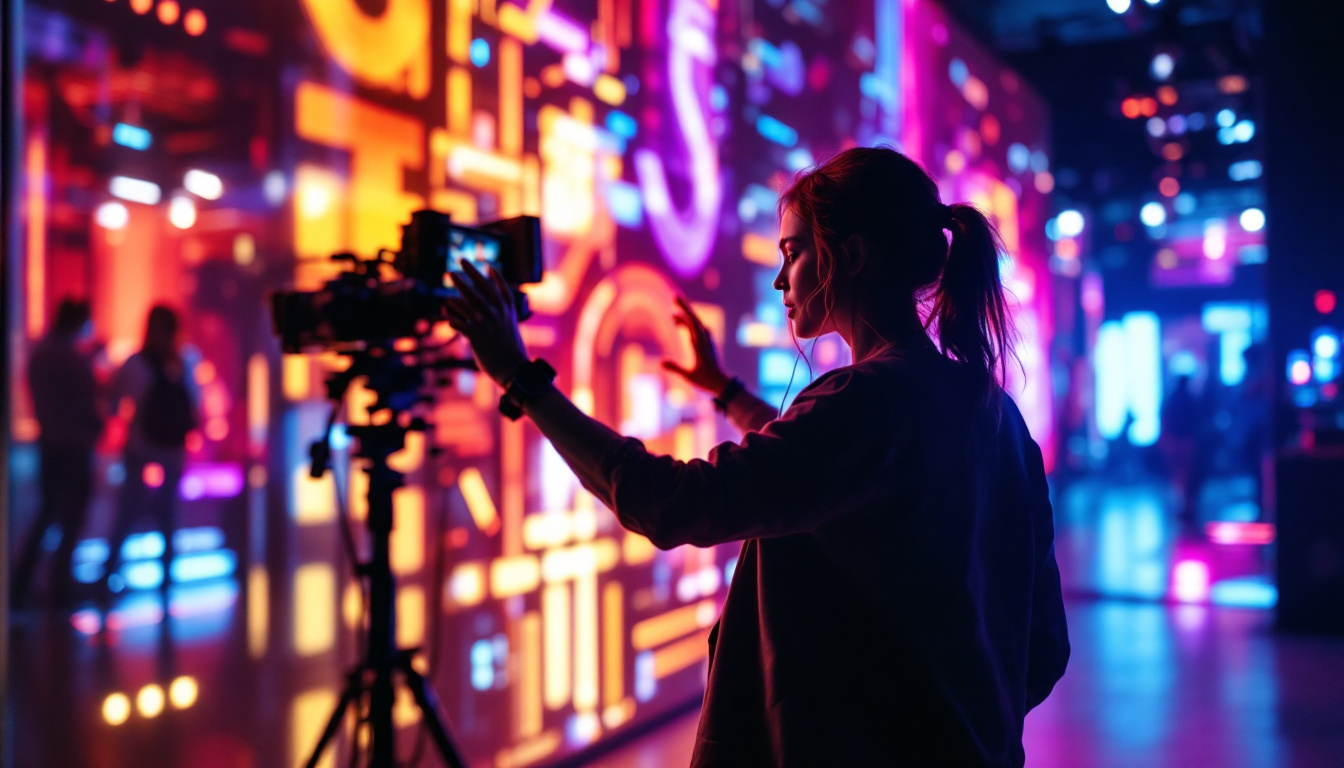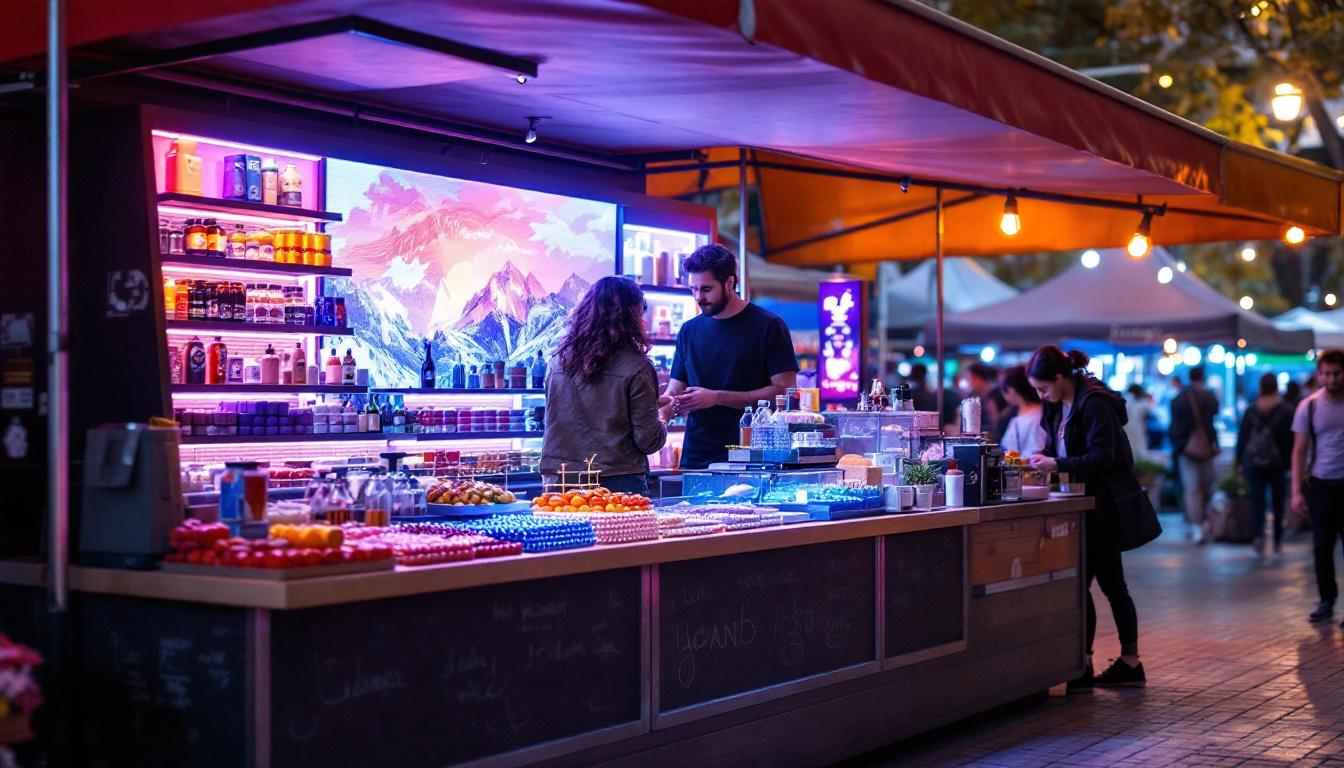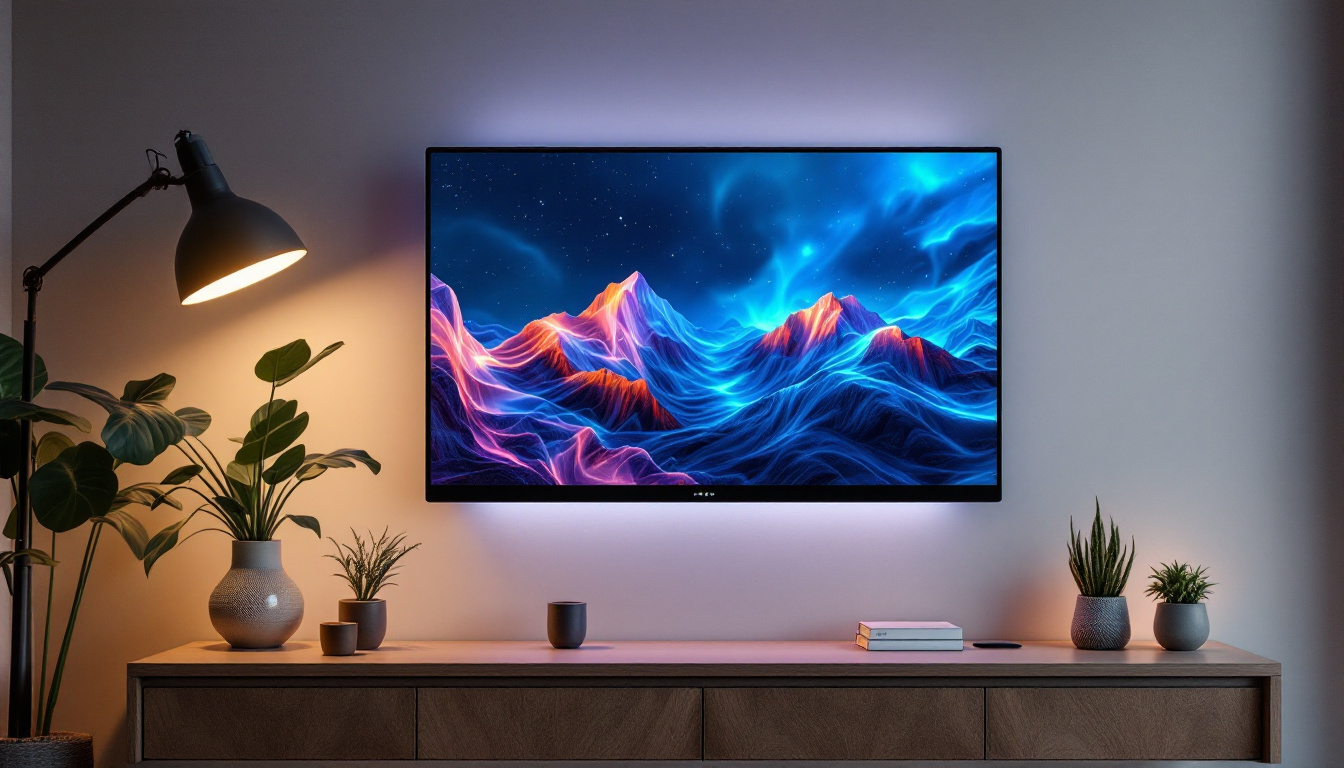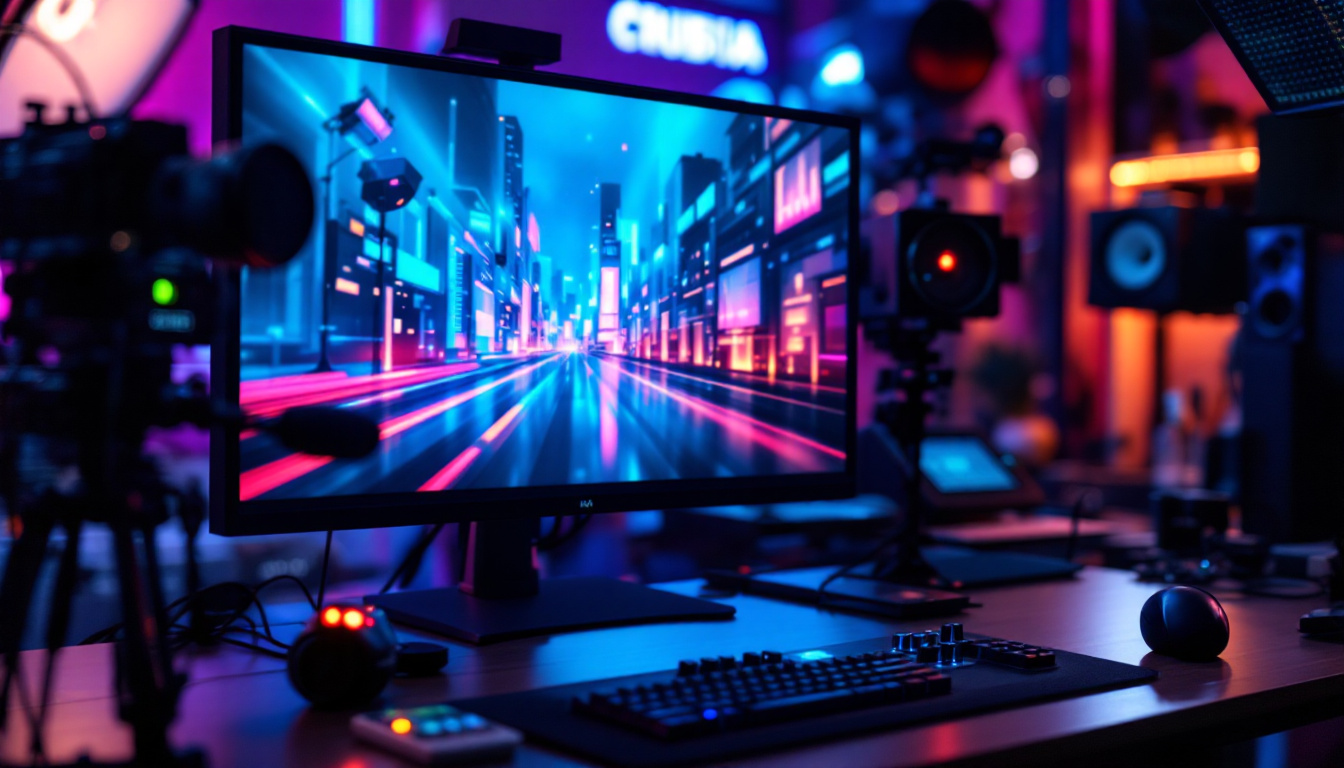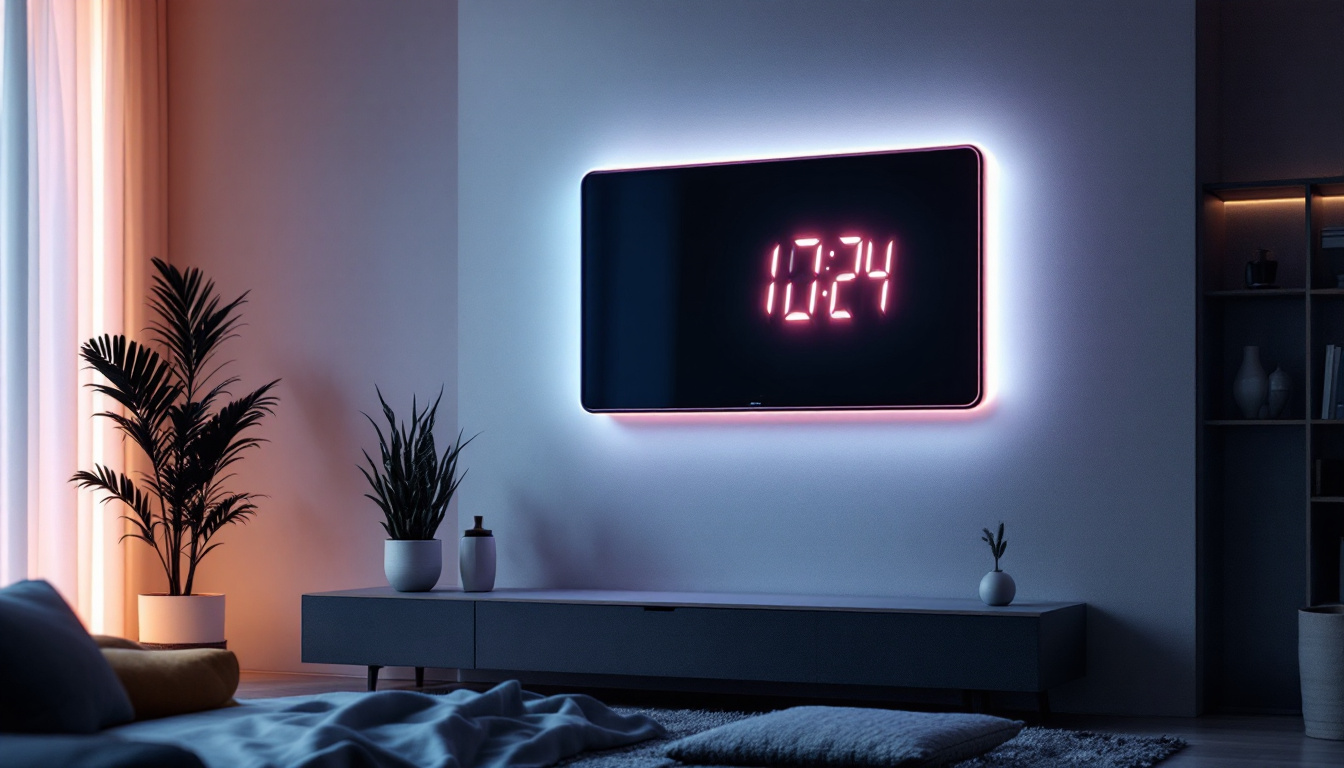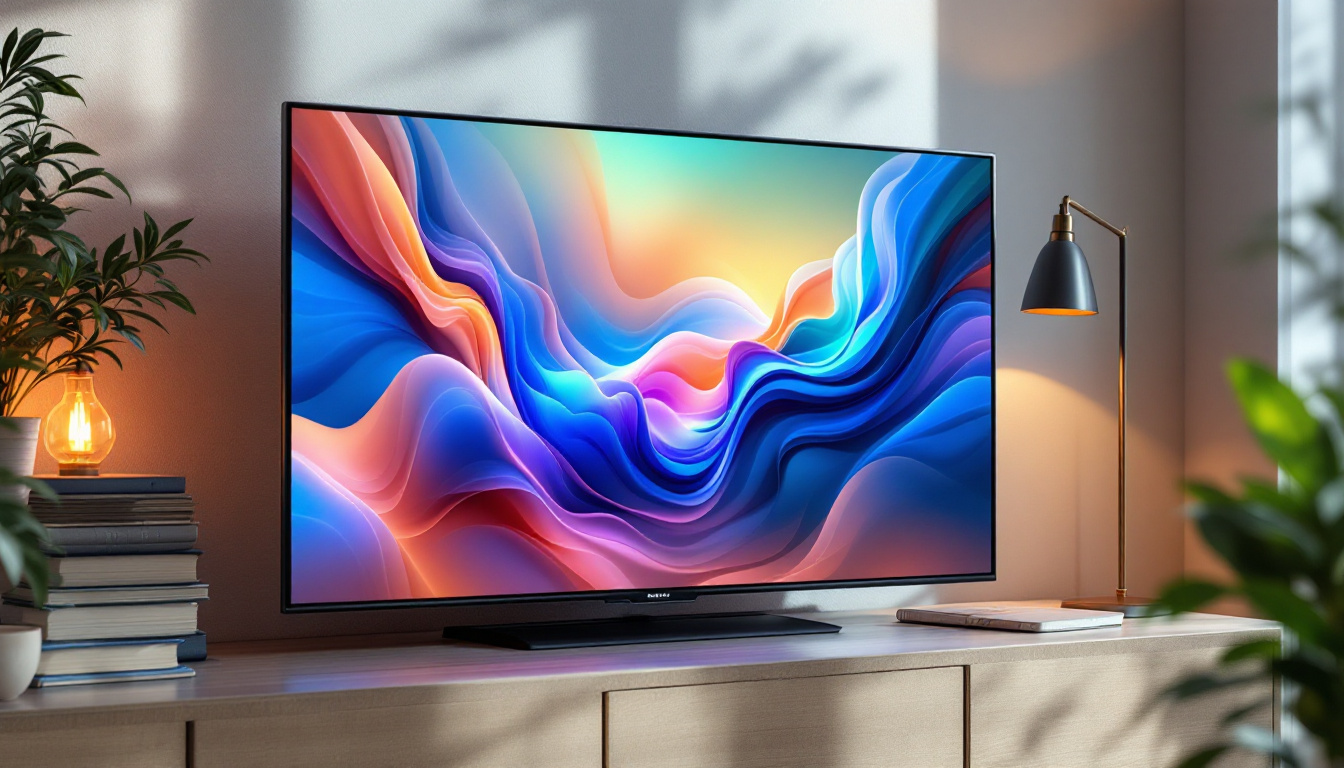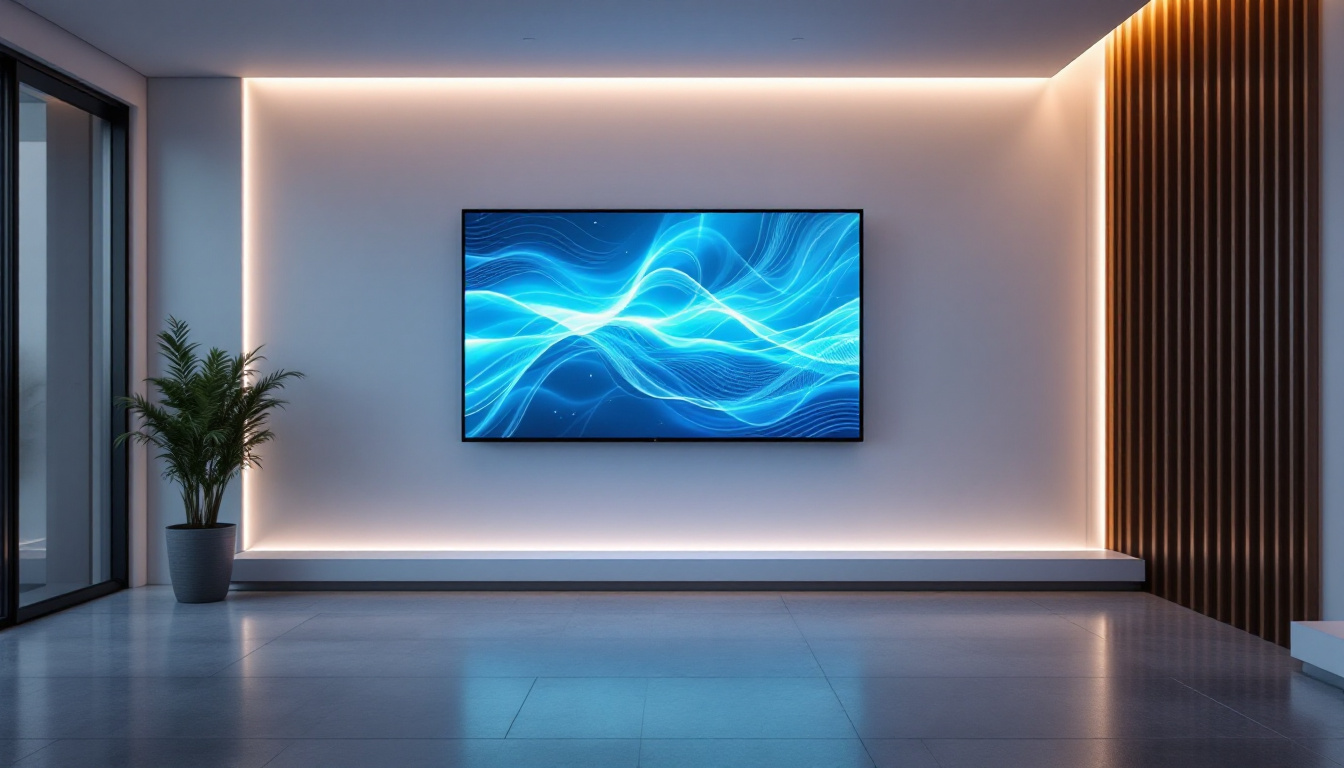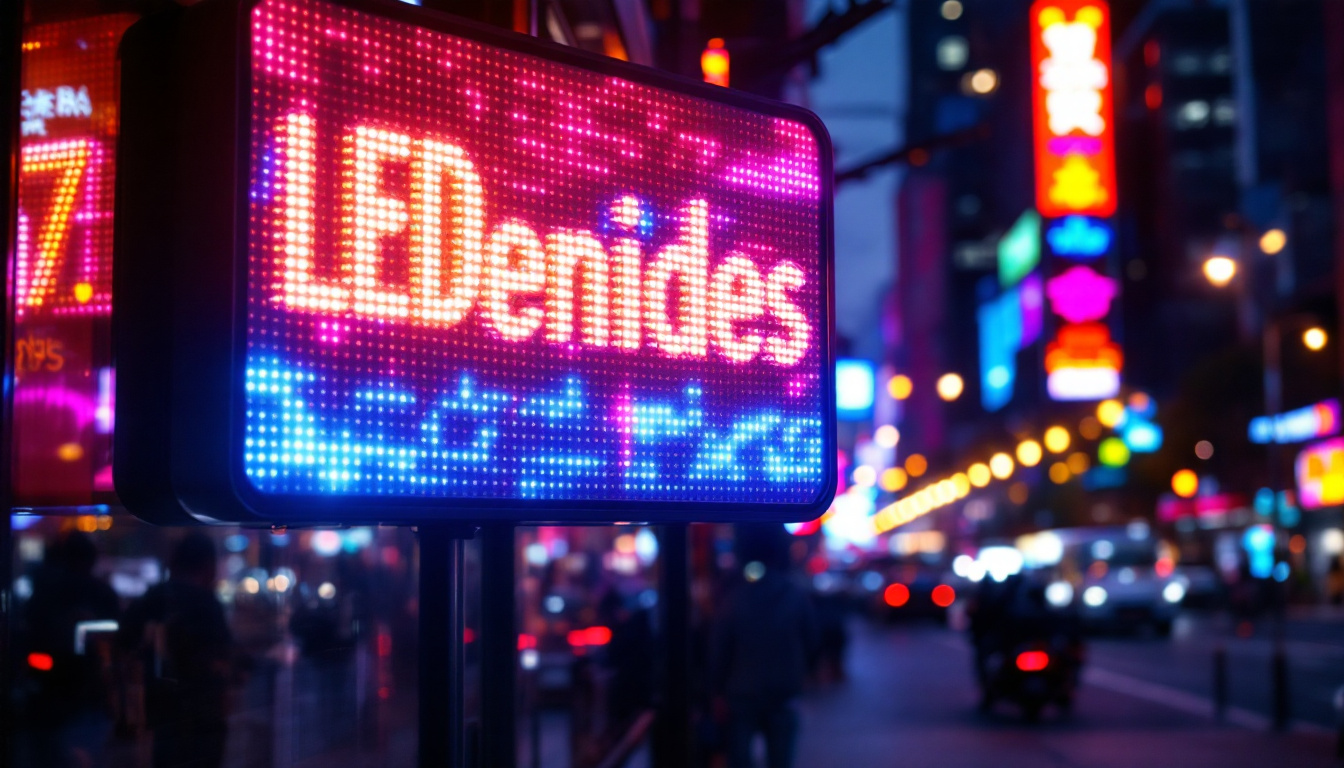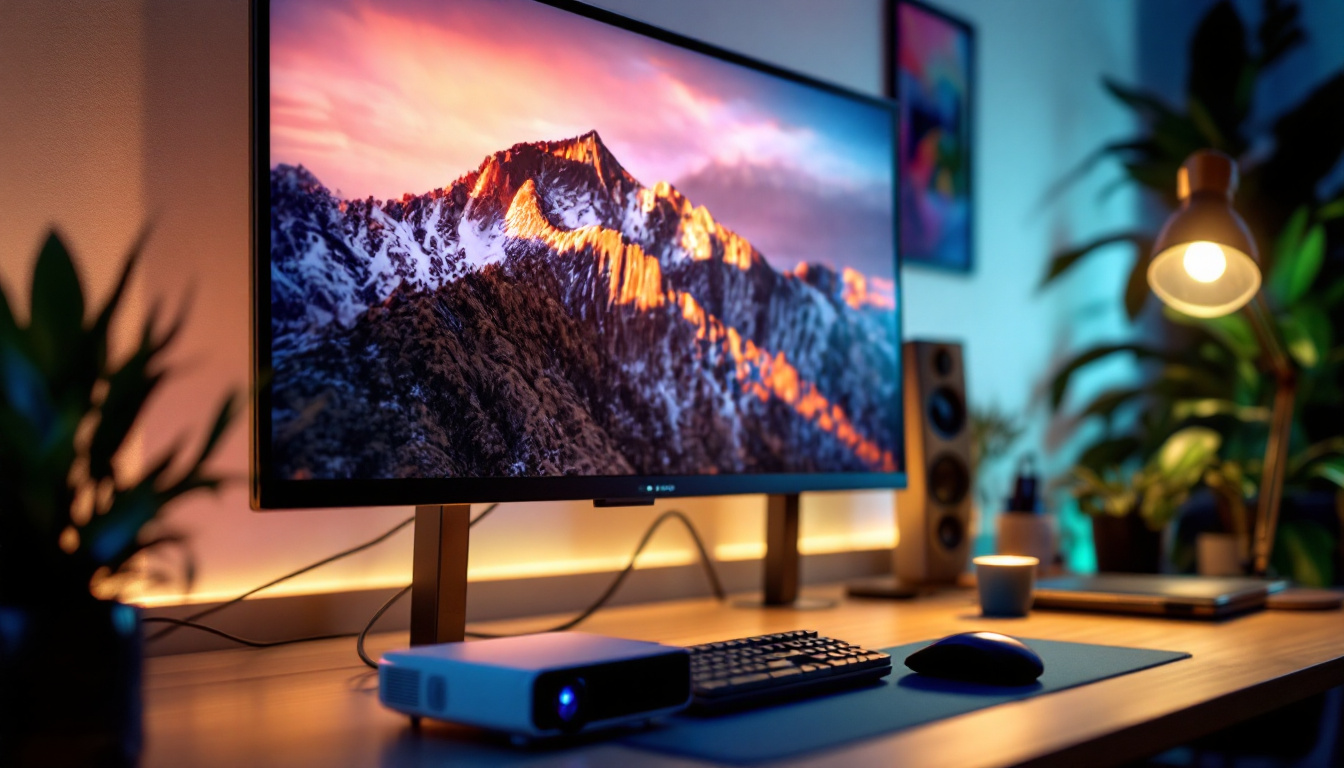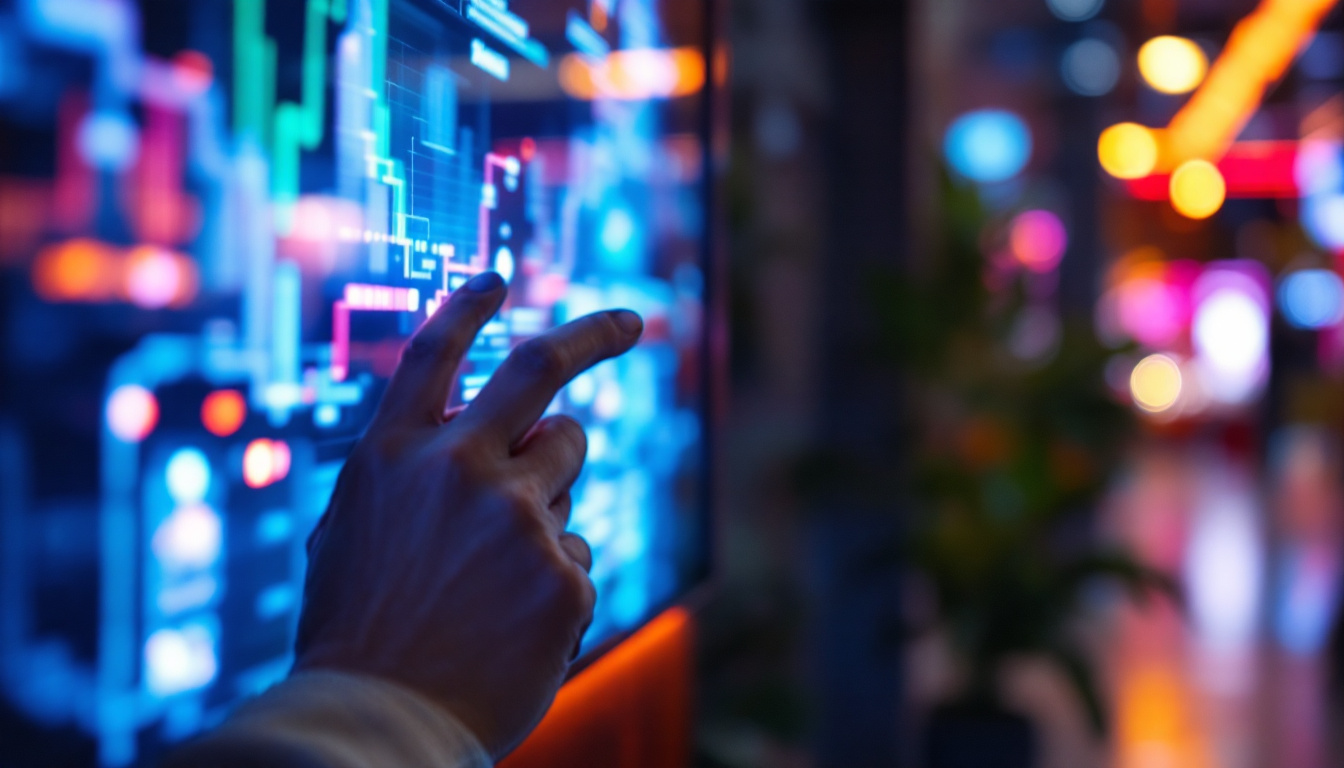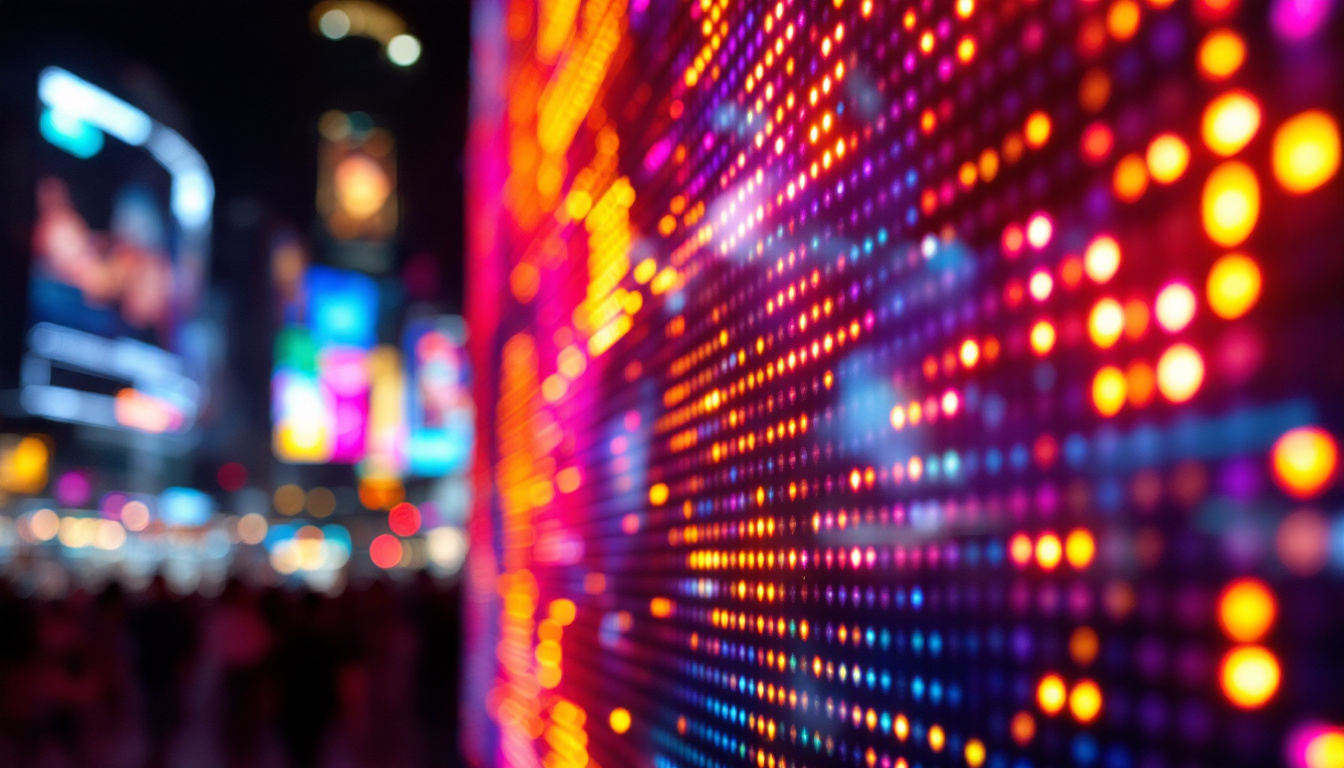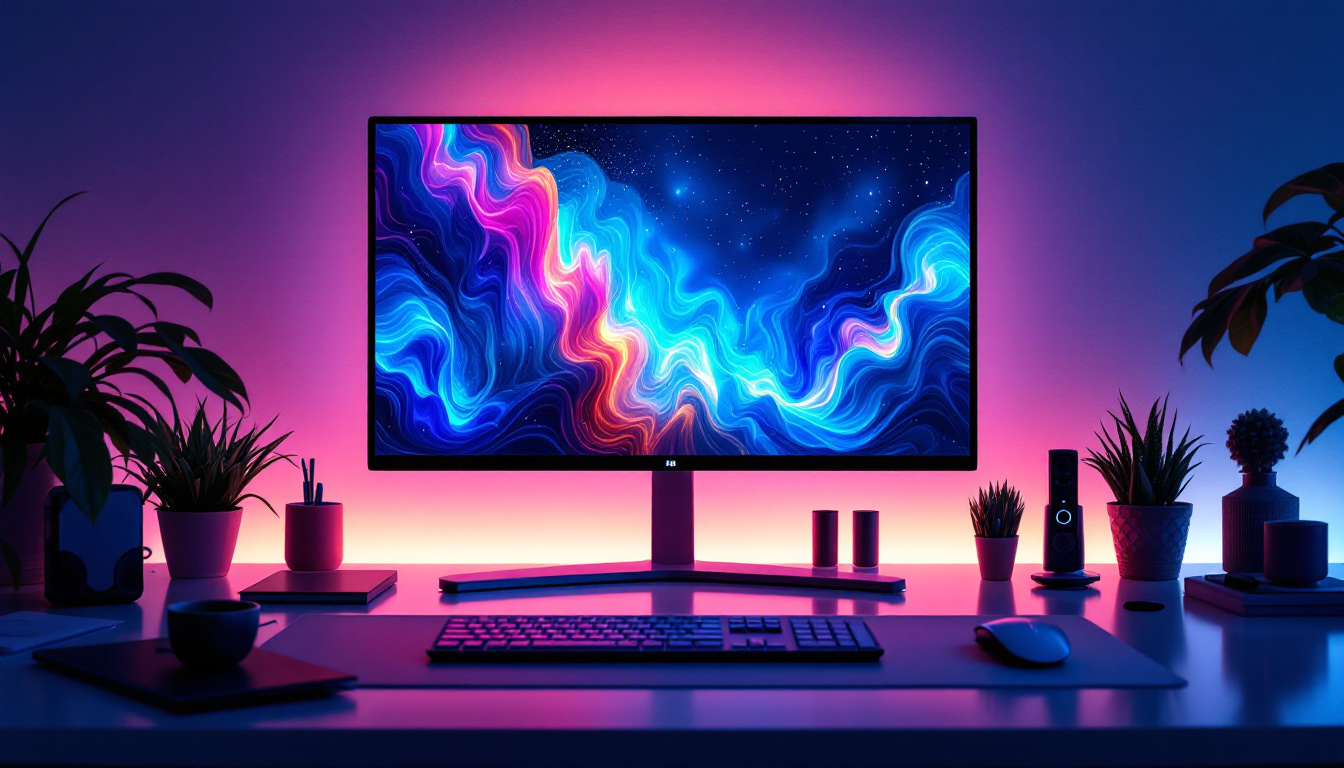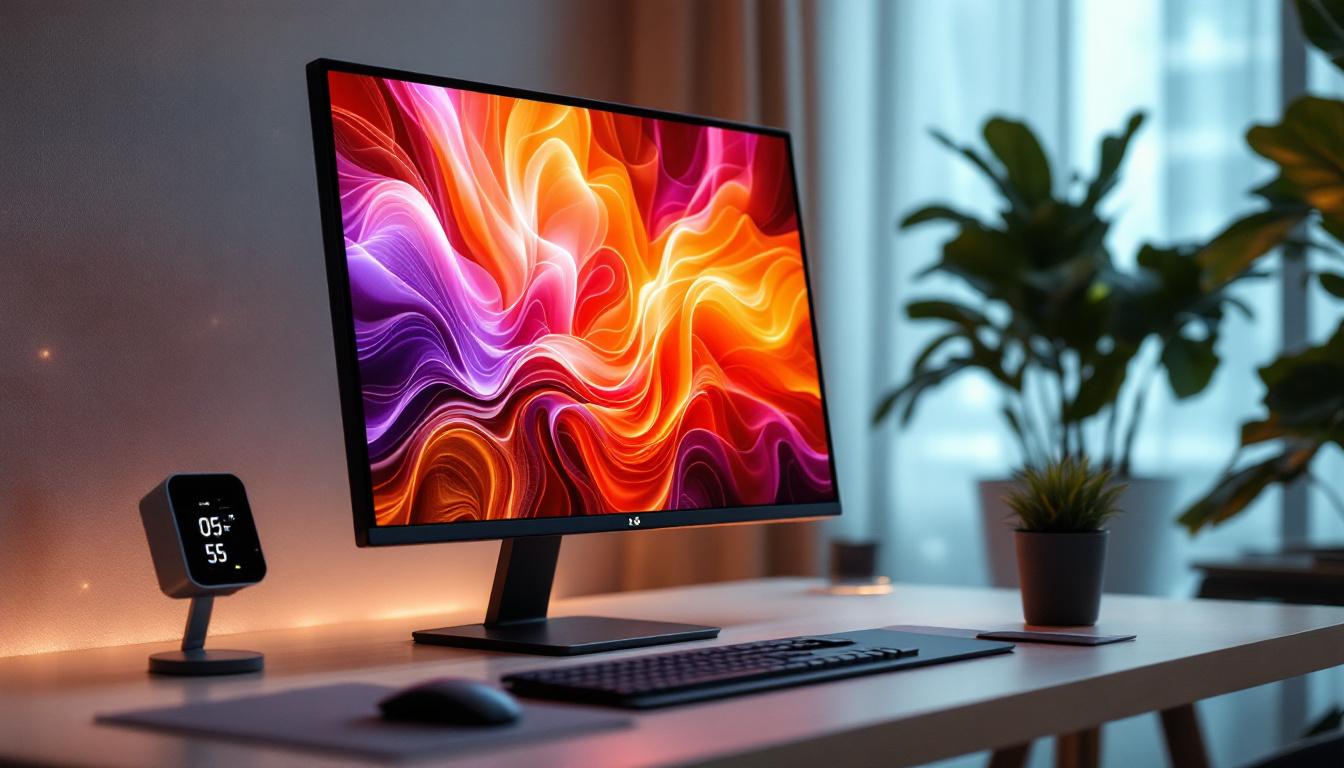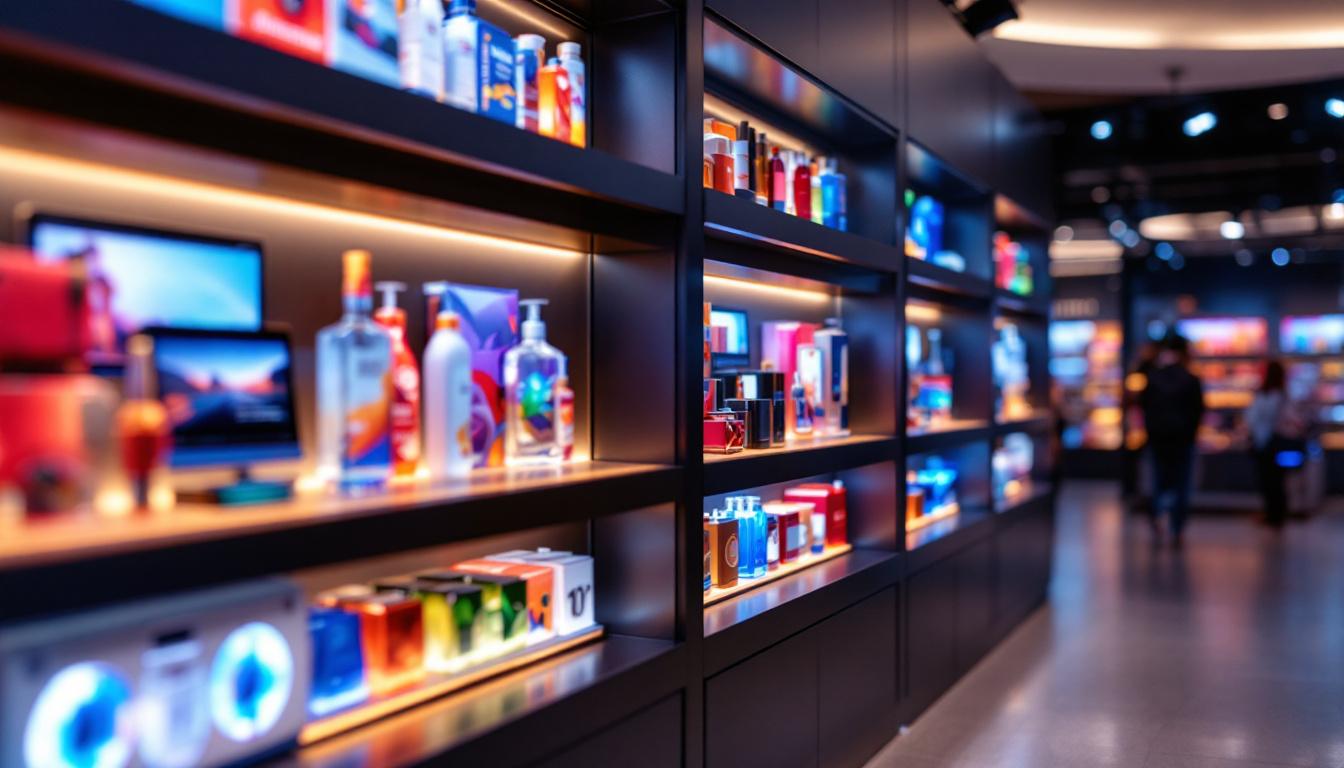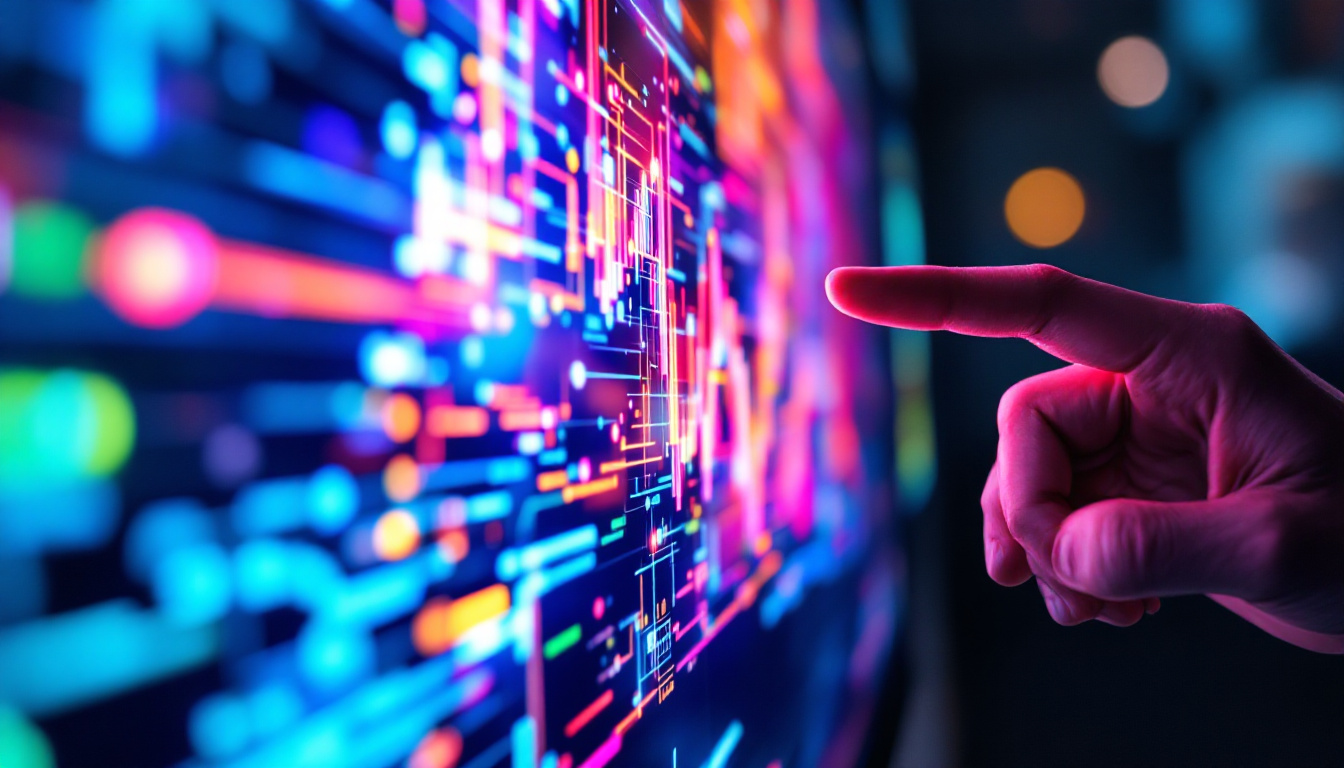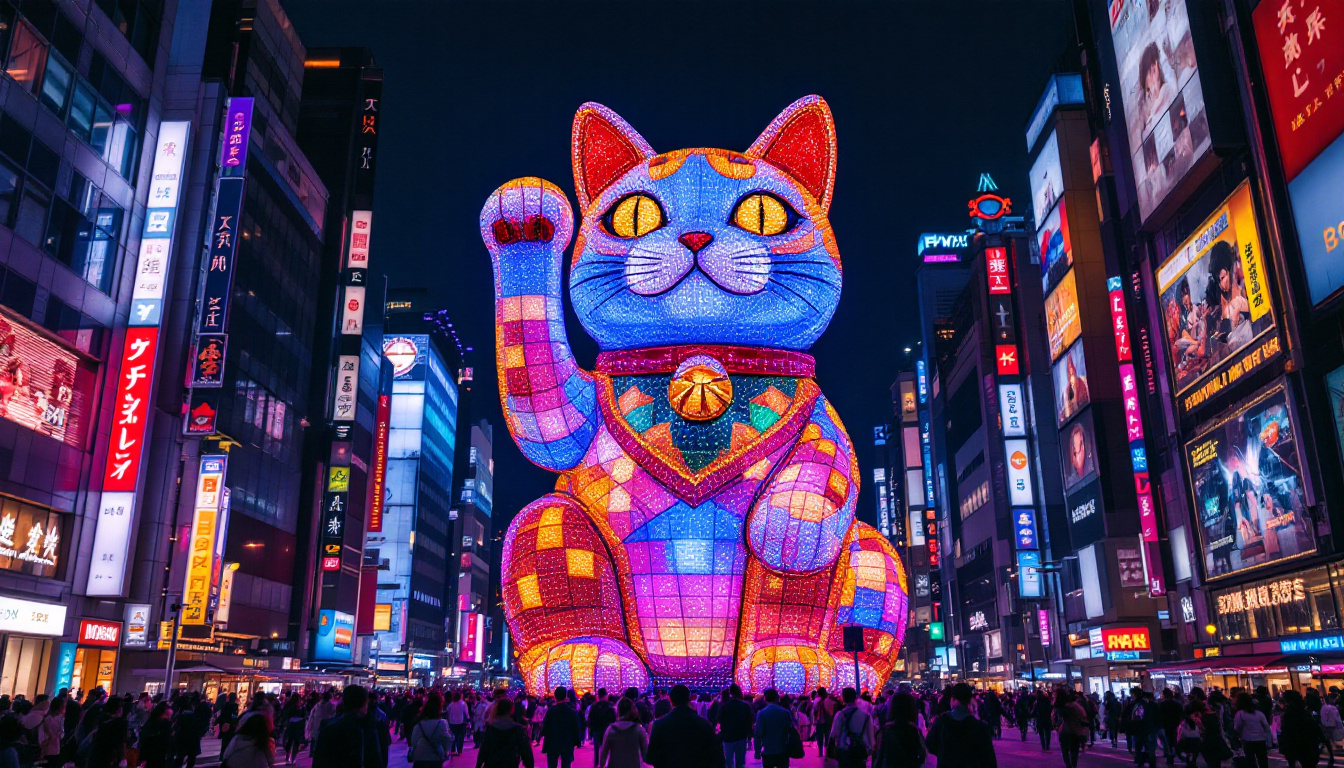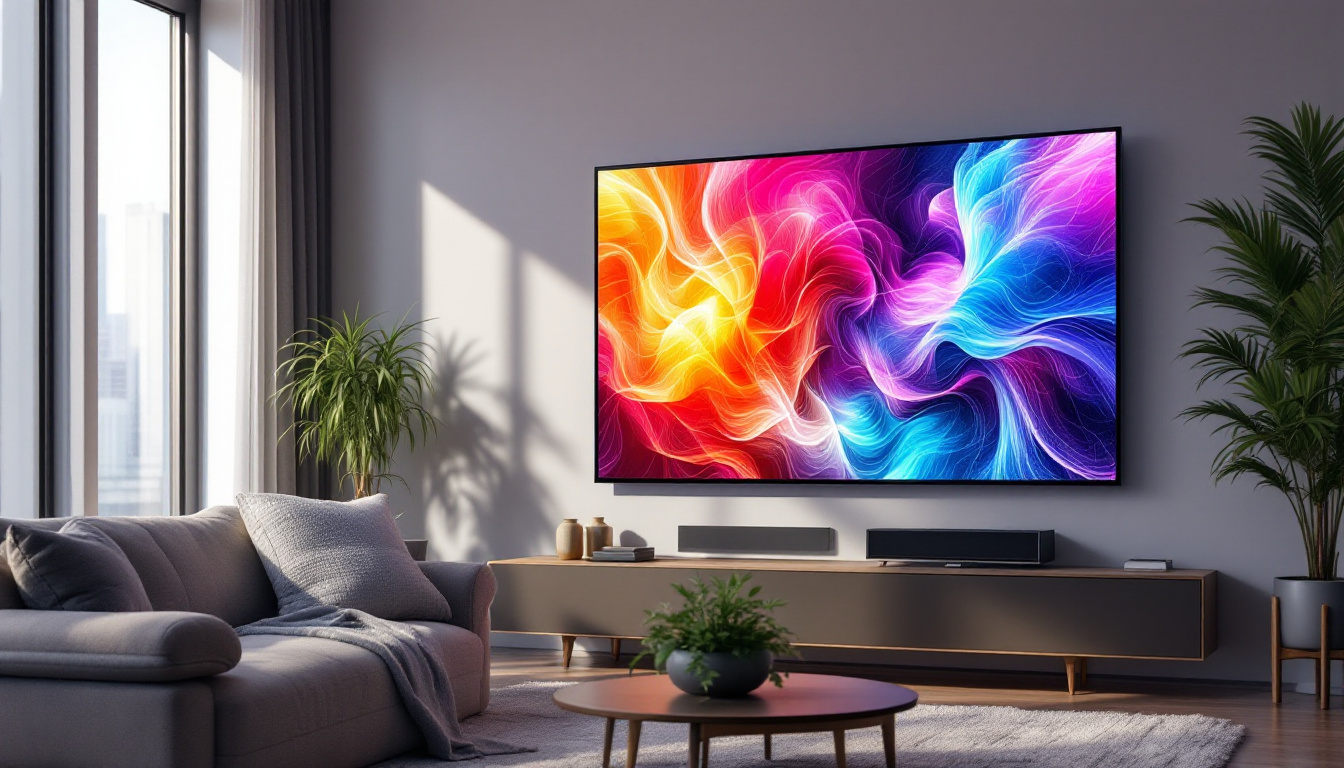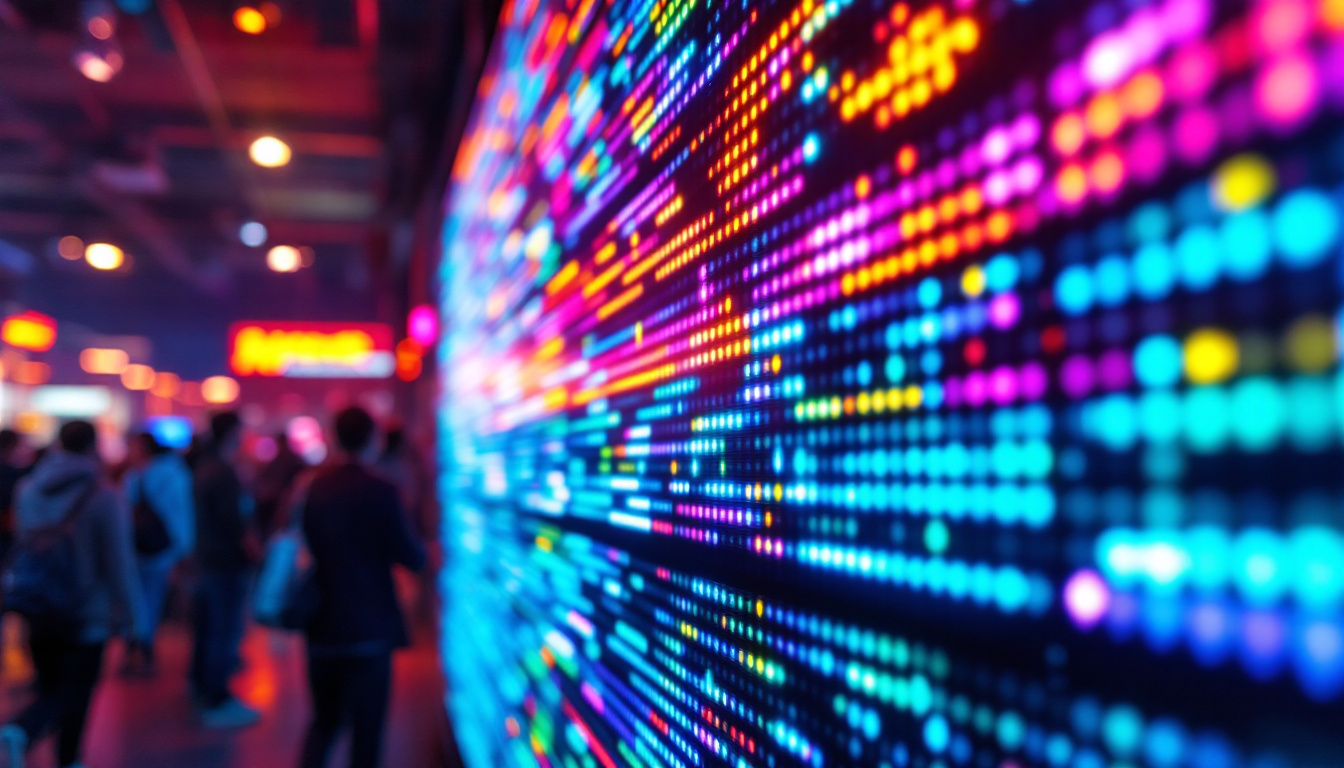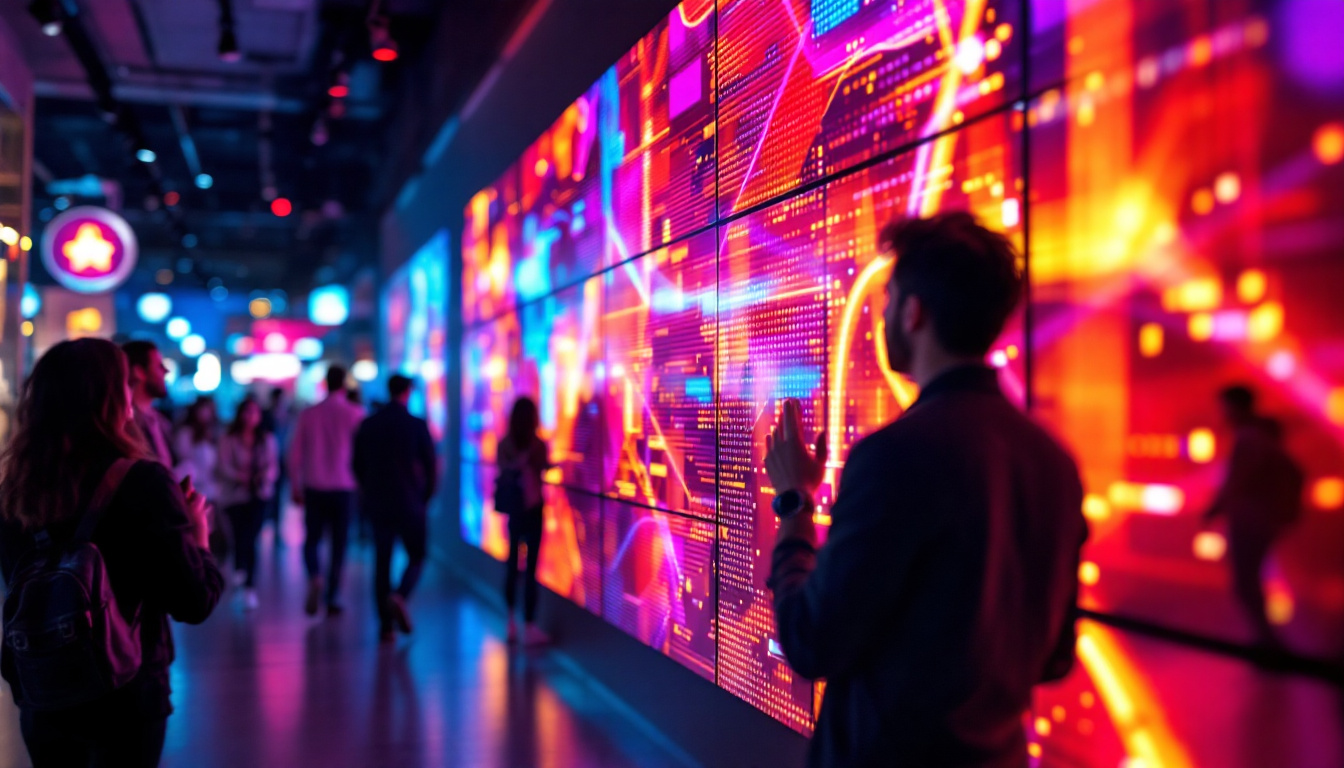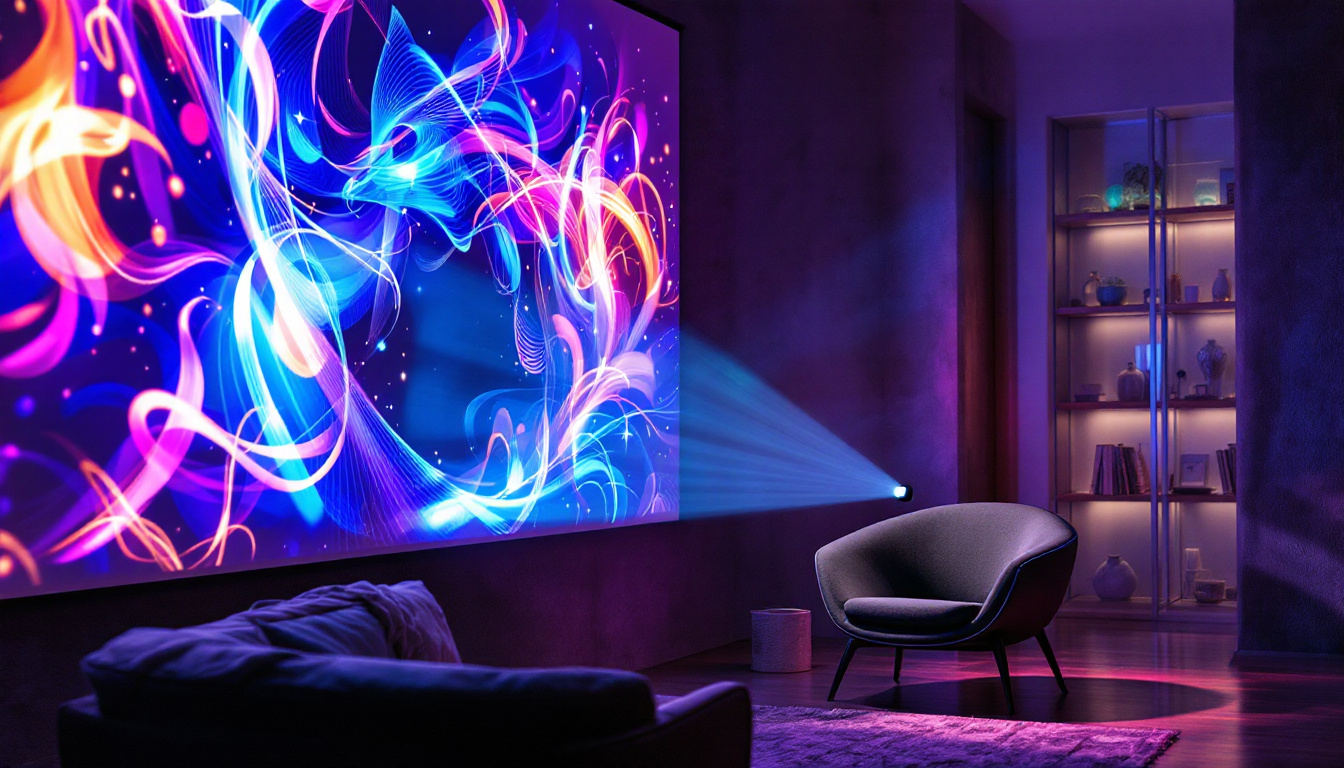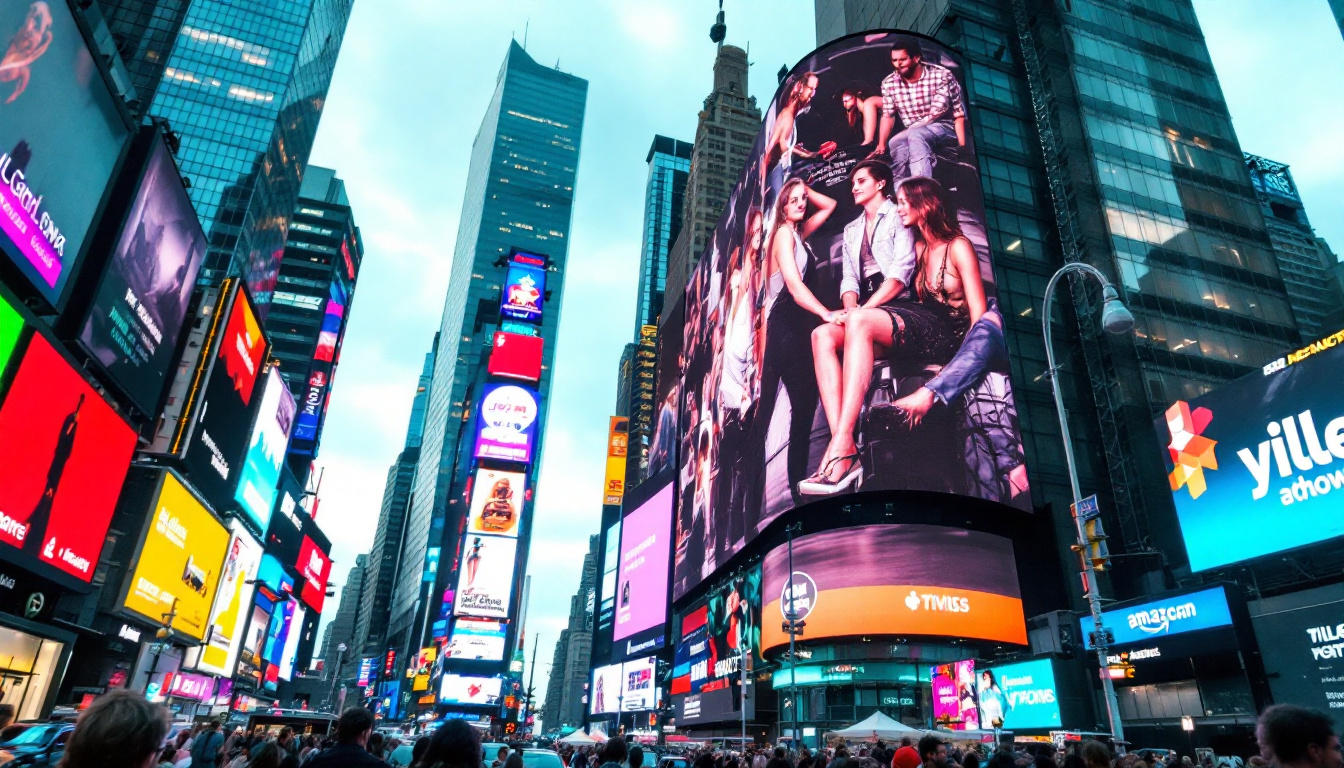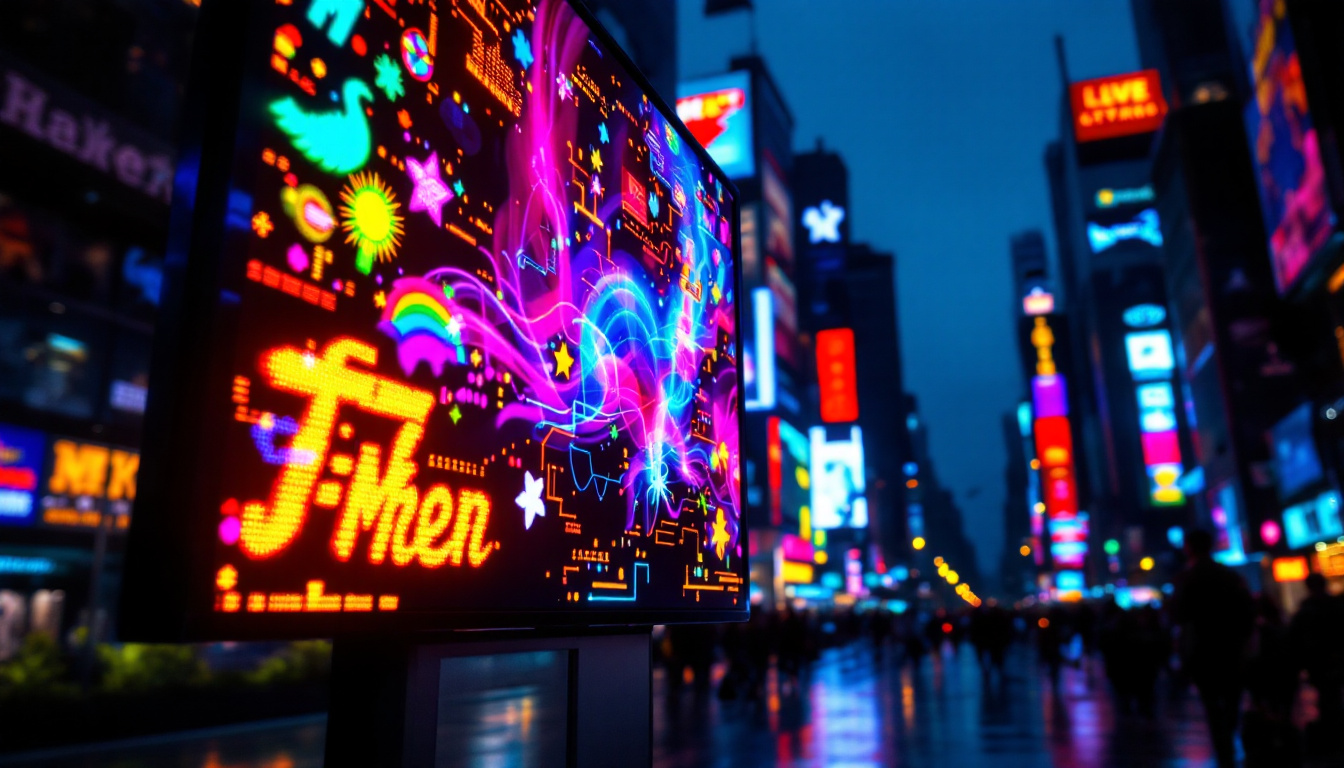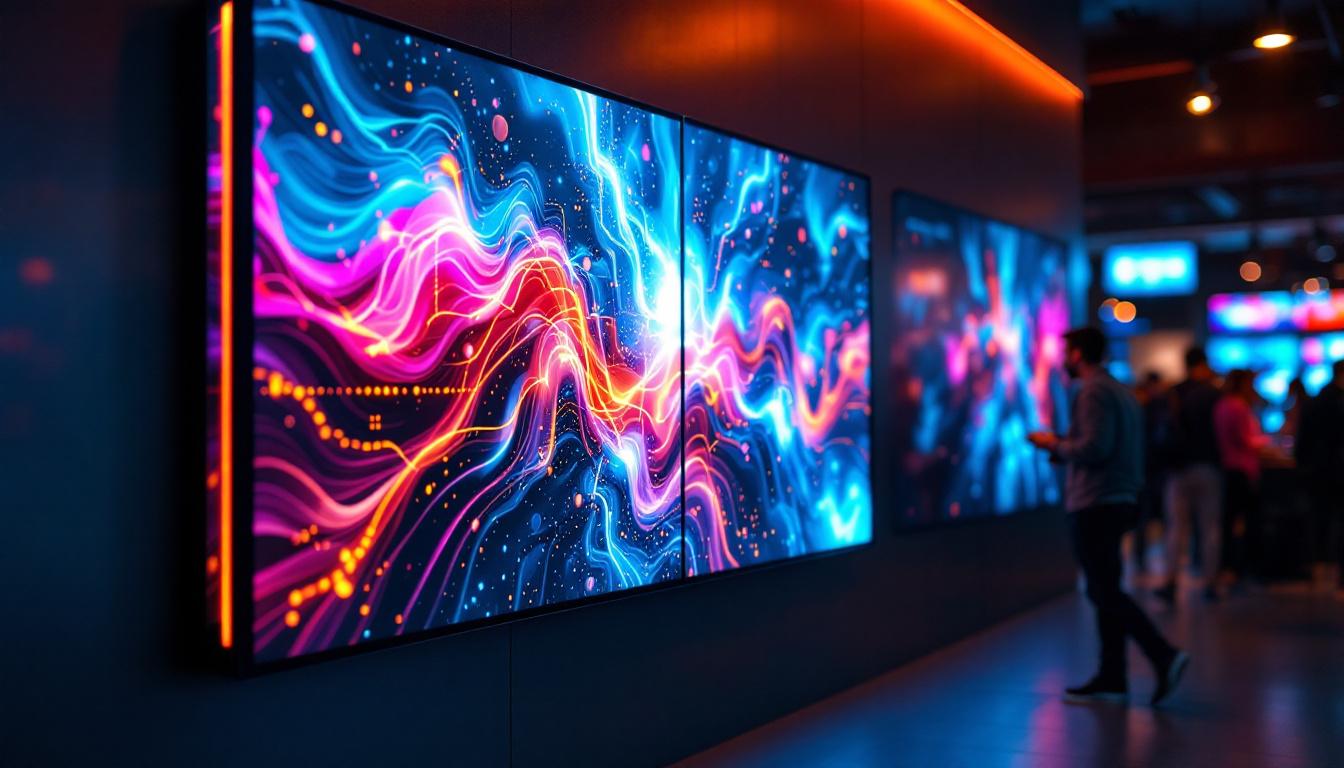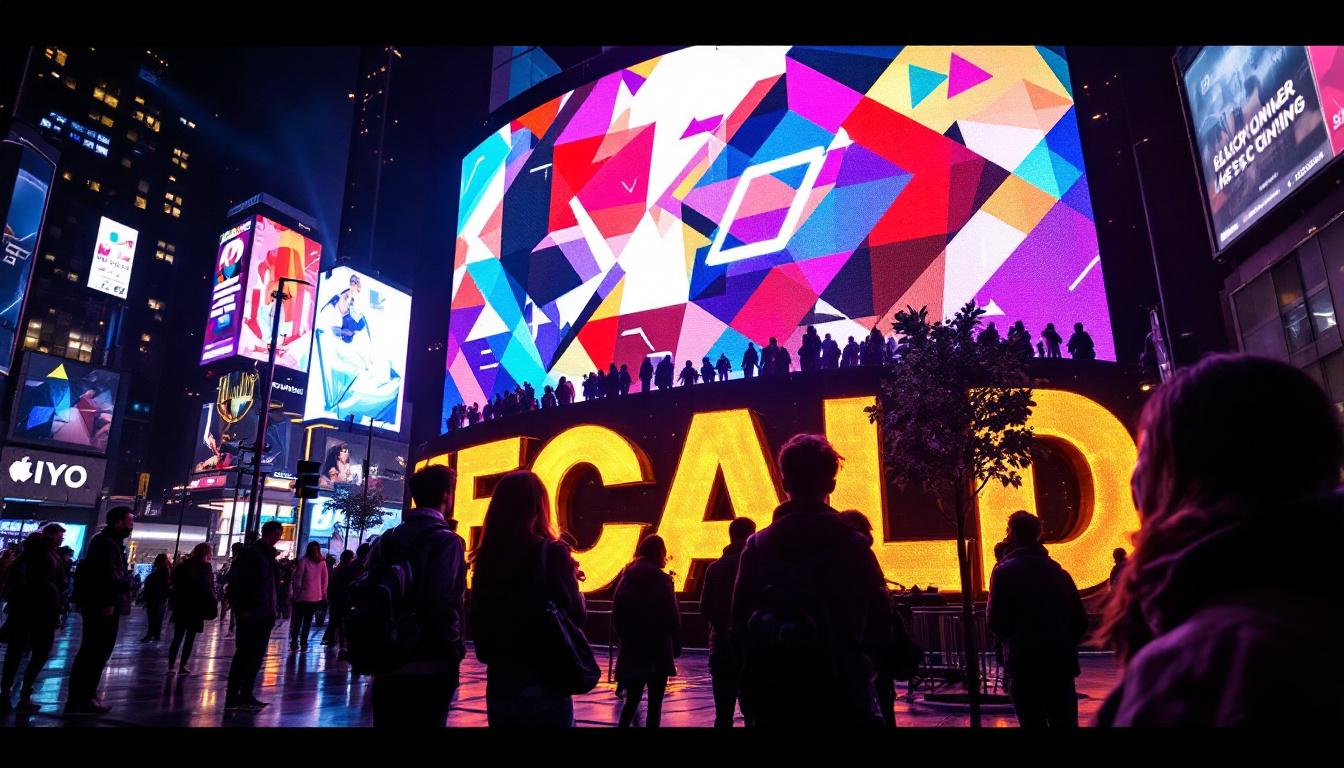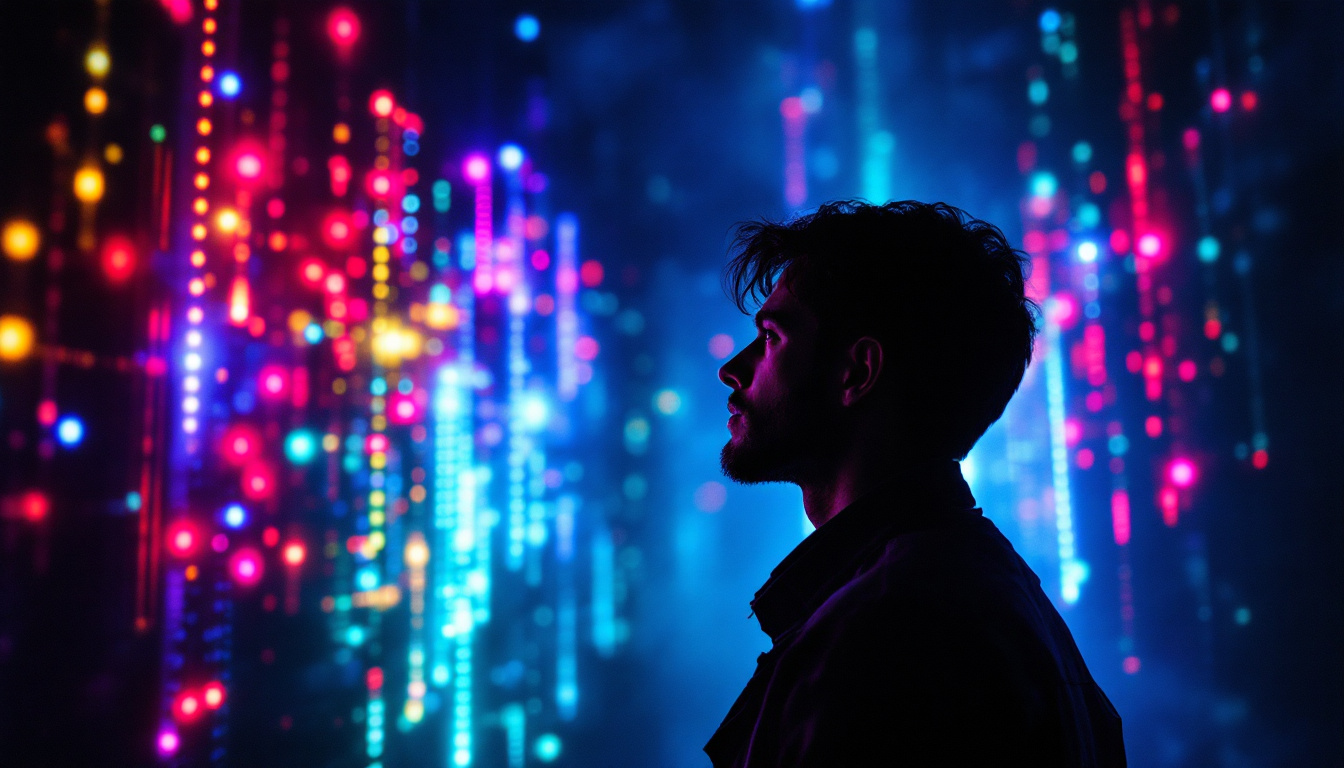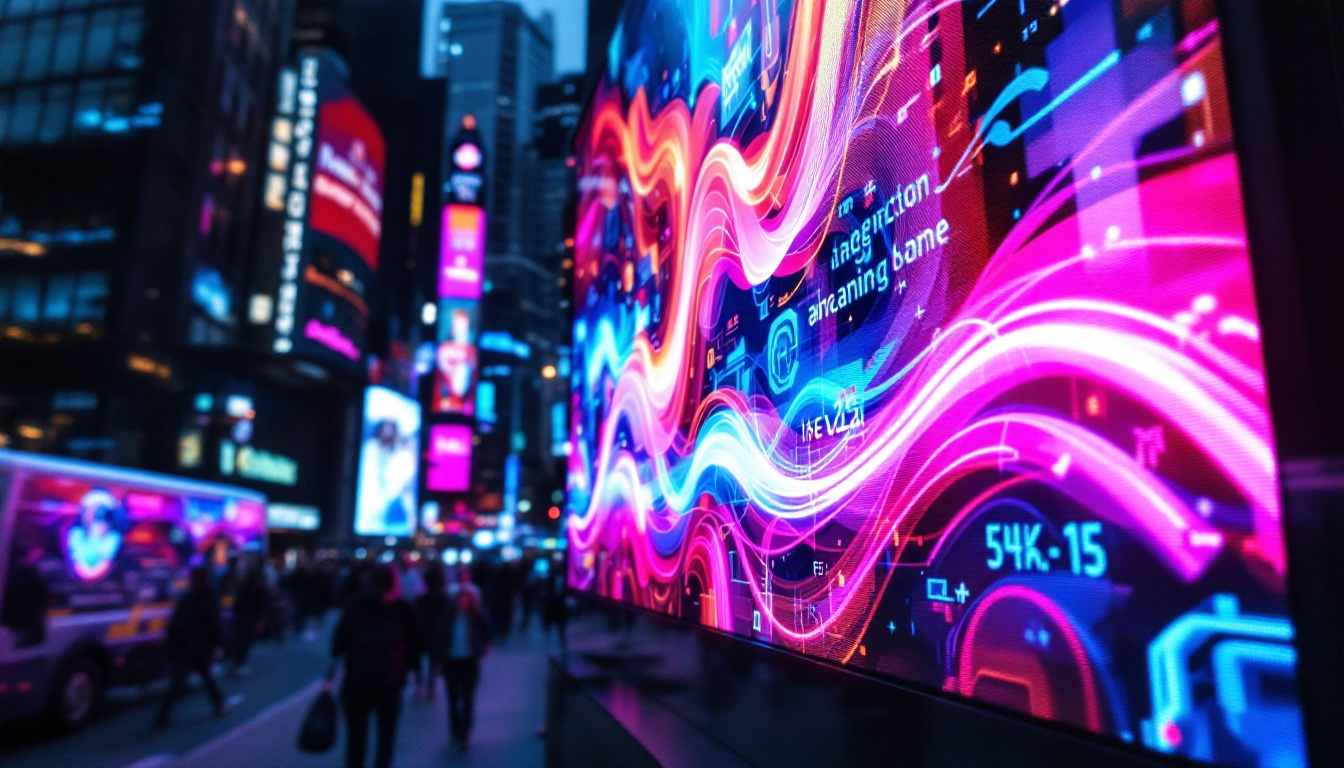In the ever-evolving world of visual media, the demand for high-quality, versatile backdrops has never been greater. One of the most innovative solutions to meet this demand is the use of LED displays as studio backdrops. This technology not only enhances the aesthetic appeal of a production but also offers a range of practical benefits. This article delves into the intricacies of LED displays used as studio backdrops, exploring their advantages, applications, and the technology behind them.
Understanding LED Displays
LED, or Light Emitting Diode, technology has transformed the way images and videos are displayed. Unlike traditional projection systems, LED displays provide a brighter, more vibrant image with a wider color gamut. This section will explore the fundamental aspects of LED displays, including their composition, functionality, and the types available in the market.
What is an LED Display?
An LED display consists of numerous small diodes that emit light when an electric current passes through them. These diodes are arranged in a grid format, forming a larger screen capable of displaying images and videos. The technology allows for high resolution and clarity, making it ideal for studio environments where detail is crucial.
LED displays can be categorized into different types, including direct view LED, which is commonly used for large outdoor screens, and fine pitch LED, designed for close-up viewing in indoor settings. The latter is particularly popular in studios, as it provides exceptional image quality even at short viewing distances.
How LED Displays Work
LED displays operate by combining red, green, and blue (RGB) diodes to create a full spectrum of colors. Each pixel on the screen is made up of these three colors, which can be adjusted in intensity to produce the desired hue. This RGB combination allows for a vibrant and dynamic display, making LED screens suitable for various applications, from concerts to corporate events.
The technology behind LED displays has advanced significantly, with features such as high refresh rates and improved brightness levels. These advancements ensure that the displays perform well under different lighting conditions, which is crucial in a studio setting where lighting can vary dramatically.
Advantages of Using LED Displays as Studio Backdrops
Utilizing LED displays as backdrops in studios presents numerous advantages over traditional methods. These benefits range from enhanced visual quality to increased flexibility and cost-effectiveness. Here, we will explore some of the most compelling reasons to consider LED displays for studio backdrops.
Enhanced Visual Quality
One of the most significant advantages of LED displays is their ability to produce stunning visuals. The high resolution and brightness levels ensure that images are sharp and vibrant, capturing the audience’s attention. This is particularly important in a studio environment where every detail matters.
Moreover, LED displays can be programmed to display dynamic content, allowing for seamless transitions between scenes. This capability enhances storytelling and can create immersive experiences for viewers, making productions more engaging and memorable.
Flexibility and Customization
LED displays offer unparalleled flexibility in terms of size, shape, and content. They can be configured to fit various studio layouts, whether it’s a large production set or a smaller, intimate setting. This adaptability allows studios to create unique environments tailored to specific themes or branding requirements.
Additionally, the content displayed on LED screens can be easily updated or changed, providing studios with the ability to adapt quickly to different production needs. This flexibility is particularly beneficial for live events, where real-time updates can enhance the viewer experience.
Cost-Effectiveness
While the initial investment in LED technology may be higher than traditional backdrops, the long-term savings can be substantial. LED displays are durable and require less maintenance compared to physical backdrops, which may need to be replaced frequently due to wear and tear.
Furthermore, the ability to change content without the need for physical alterations reduces production costs over time. Studios can save on printing and storage costs associated with traditional backdrops, making LED displays a financially sound choice in the long run.
Applications of LED Displays in Studios
The versatility of LED displays makes them suitable for a wide range of applications within studio environments. From television production to live events, the following sections will highlight some of the most common uses of LED backdrops in various settings.
Television and Film Production
In television and film production, LED displays have become a staple for creating immersive environments. They can be used to simulate different locations, allowing producers to transport viewers to various settings without the need for extensive travel or location shoots.
Moreover, LED backdrops can enhance green screen technology by providing realistic backgrounds that can be integrated into live-action footage. This combination of technologies allows for seamless visual storytelling, enhancing the overall production quality.
Live Events and Concerts
Live events, such as concerts and corporate gatherings, benefit significantly from LED displays. They can be used to create dynamic stage designs that captivate audiences. The ability to change visuals in real time allows event planners to tailor the experience to the audience, enhancing engagement and excitement.
Additionally, LED displays can serve as informative screens, providing attendees with essential information, such as schedules or speaker bios, while also contributing to the overall aesthetic of the event.
Virtual and Augmented Reality
As virtual and augmented reality technologies continue to evolve, LED displays play a crucial role in creating immersive experiences. In studios, they can be used to project virtual environments that enhance the realism of VR and AR applications.
This integration allows for more interactive and engaging experiences, where users can feel as though they are part of a digital world. The combination of LED technology with VR and AR opens up new possibilities for storytelling and audience engagement.
Choosing the Right LED Display for Your Studio
When considering LED displays for studio backdrops, it is essential to evaluate various factors to ensure the right choice is made. The following considerations will help guide the decision-making process.
Resolution and Pixel Pitch
The resolution of an LED display is crucial, especially in a studio setting where viewers may be close to the screen. Pixel pitch, which refers to the distance between individual pixels, directly affects the clarity of the image. A smaller pixel pitch typically results in higher resolution and better image quality.
For studios, a pixel pitch of 2.5mm or less is often recommended, as it provides the sharpness needed for high-definition content. However, the choice may also depend on the viewing distance; larger displays viewed from a distance can accommodate a larger pixel pitch without compromising quality.
Brightness and Contrast Ratio
Brightness is another critical factor to consider, particularly in studios where lighting conditions can vary. LED displays with higher brightness levels ensure that visuals remain clear and vibrant, even in well-lit environments.
Contrast ratio, which measures the difference between the darkest and lightest parts of an image, also plays a vital role in visual quality. A higher contrast ratio enhances the depth and richness of colors, making the display more visually appealing.
Installation and Maintenance
Installation requirements can vary significantly between different LED display models. Some may require specialized mounting systems or structural support, while others are designed for easy setup. Understanding the installation process is essential to ensure a smooth integration into the studio environment.
Maintenance is another important consideration. LED displays generally require less upkeep than traditional backdrops, but regular cleaning and occasional servicing are still necessary to maintain optimal performance. Choosing a model with a reputation for reliability can help minimize long-term maintenance concerns.
Future Trends in LED Display Technology
The LED display industry is continuously evolving, with new technologies and innovations emerging regularly. Staying informed about these trends can help studios make informed decisions about their backdrop solutions. Here are some future trends to watch for in LED display technology.
Advancements in Flexibility and Design
Future LED displays are expected to become even more flexible, allowing for creative designs that were previously unattainable. Innovations in materials and manufacturing processes may lead to displays that can be bent or shaped to fit unique studio configurations.
This flexibility will enable studios to create more dynamic environments, enhancing the overall production experience. As technology progresses, the possibilities for creative design will expand, allowing for even more imaginative applications of LED displays.
Integration with Artificial Intelligence
As artificial intelligence continues to advance, its integration with LED display technology is likely to become more prevalent. AI can be used to optimize content delivery, analyze audience engagement, and even automate the display of visuals based on real-time feedback.
This integration could lead to more personalized and interactive experiences for viewers, as studios harness the power of AI to tailor content to specific audiences and contexts.
Environmental Sustainability
With growing concerns about environmental sustainability, the LED display industry is also moving towards more eco-friendly practices. Future displays may incorporate energy-efficient technologies and sustainable materials, reducing their overall environmental impact.
As studios become more conscious of their carbon footprint, choosing environmentally friendly LED solutions will not only benefit the planet but also enhance the studio’s reputation as a socially responsible entity.
Conclusion
LED displays have revolutionized the concept of studio backdrops, offering unparalleled visual quality, flexibility, and cost-effectiveness. As technology continues to evolve, the applications and possibilities for LED displays are expanding, making them an indispensable tool for modern studios.
Whether in television production, live events, or immersive experiences, LED displays provide the ability to create stunning visuals that engage and captivate audiences. By understanding the technology, advantages, and future trends, studios can make informed decisions that enhance their productions and elevate their storytelling capabilities.
As the demand for high-quality visual content grows, embracing LED display technology will be essential for studios aiming to stay ahead in a competitive landscape. The future of studio backdrops is bright, and LED displays are leading the way.
Discover LumenMatrix LED Display Solutions
Ready to elevate your studio backdrop with the latest in LED display technology? Look no further than LumenMatrix, a pioneer in crafting visually stunning and versatile LED display modules. From Indoor and Outdoor LED Walls to innovative solutions like Vehicle Displays, LED Posters, and even Custom LED Displays, LumenMatrix has the perfect fit for your creative needs. Embrace the future of visual storytelling and check out LumenMatrix LED Display Solutions today to transform your space and captivate your audience with unparalleled clarity and impact.

